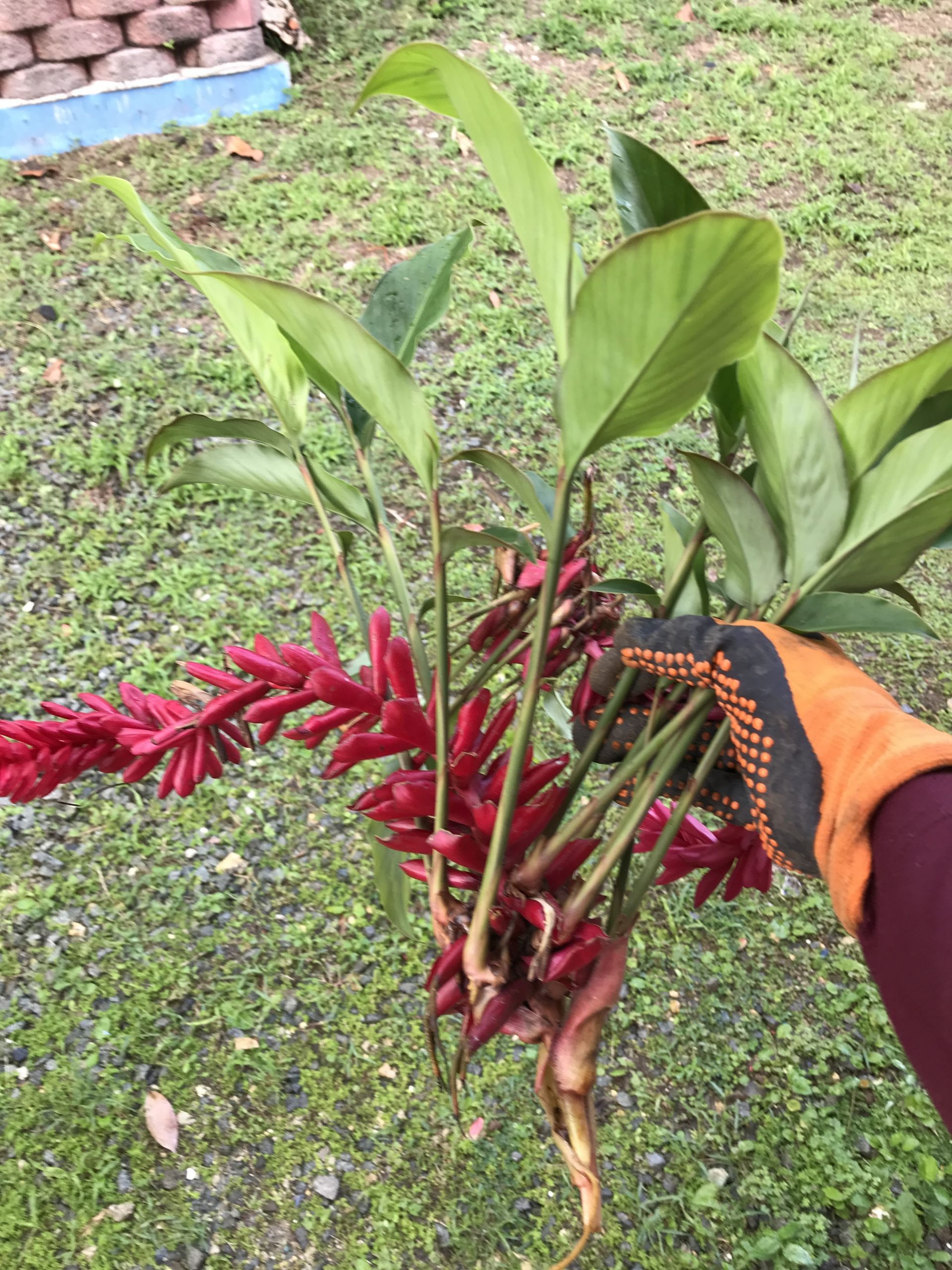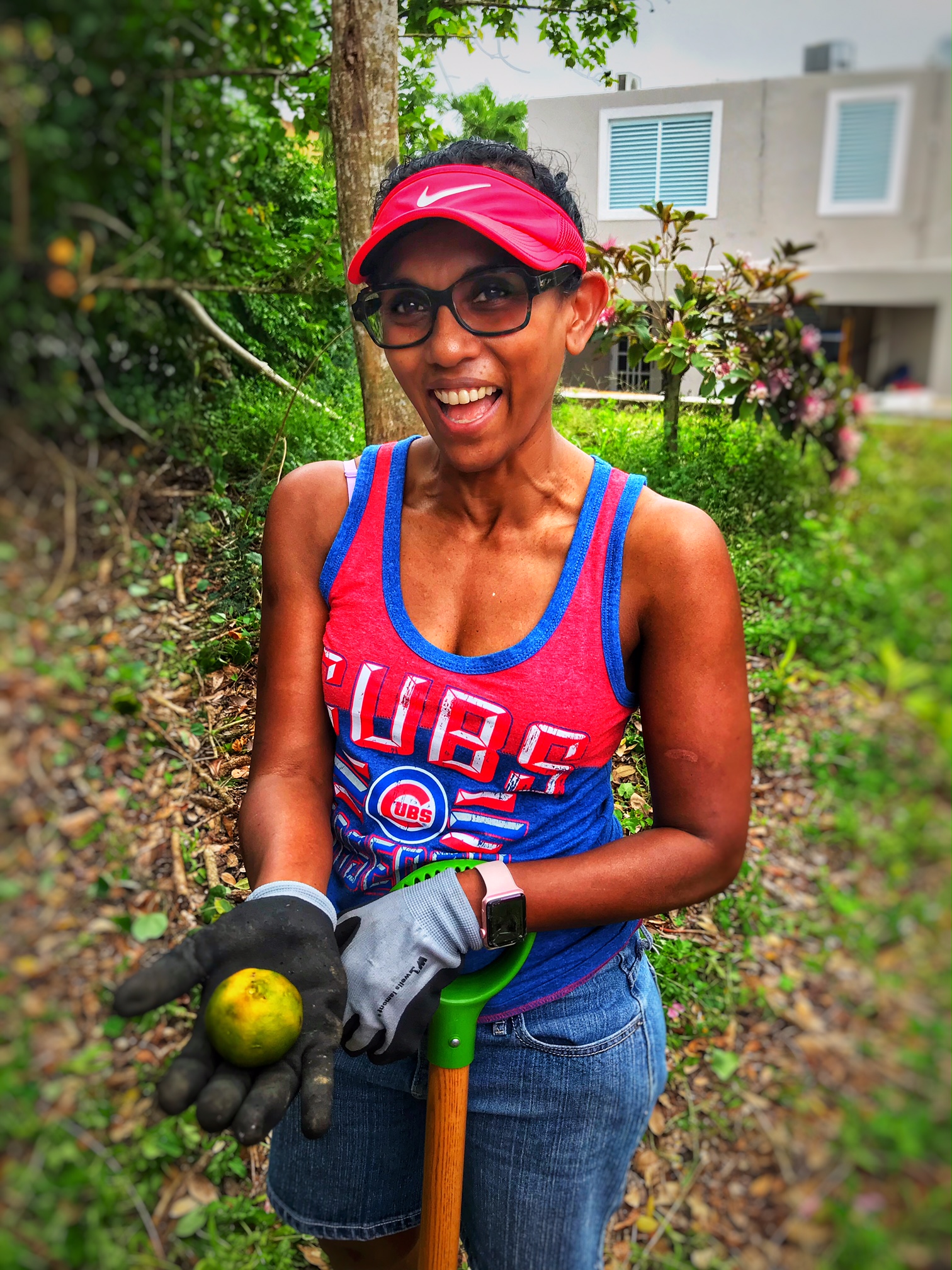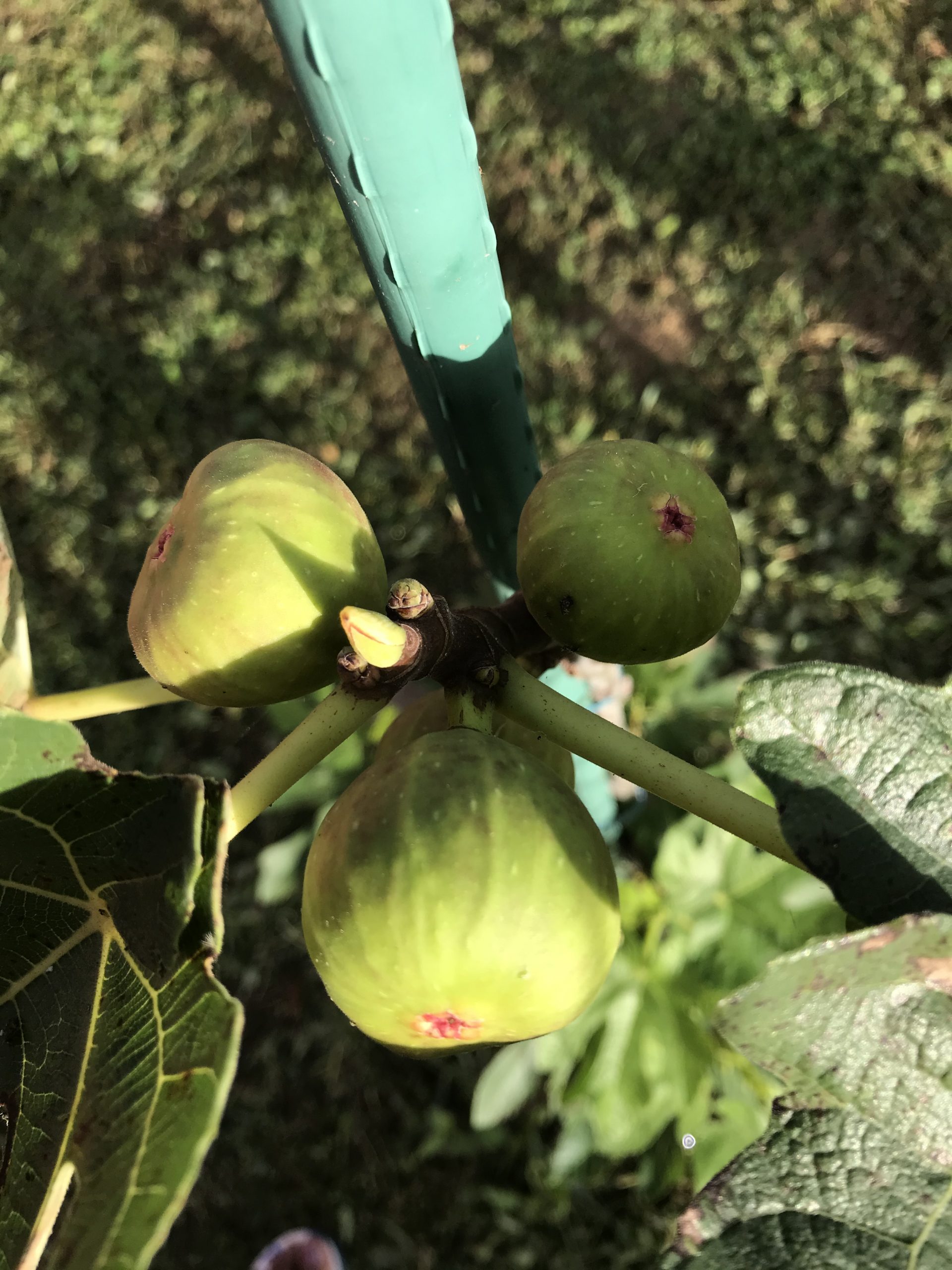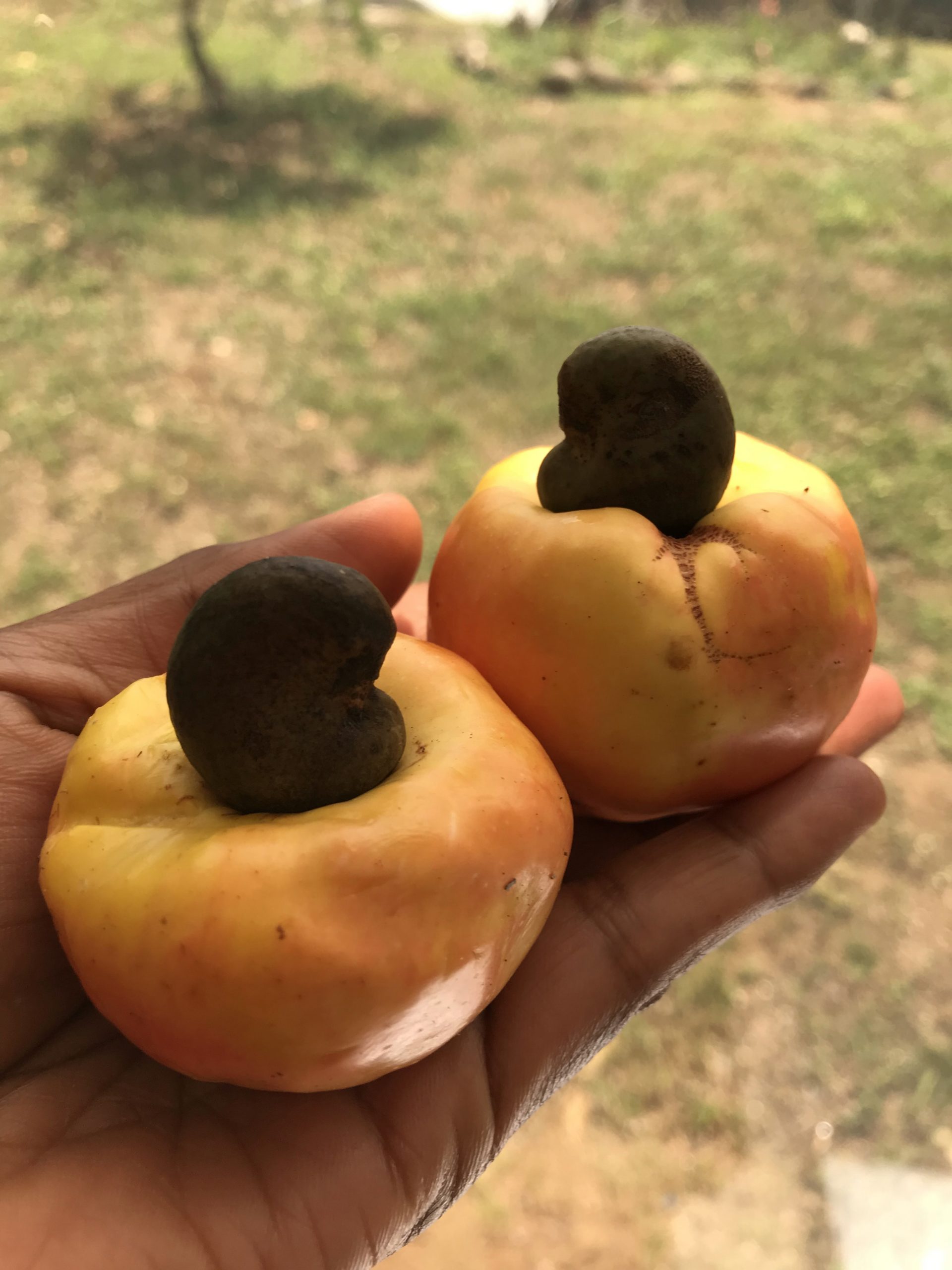Being a frugal gardener, I’m always on the lookout for plants that can be easily propagated. Why pay top dollar for a plant when one can be easily started with a seed or cutting? On my very first trip, I noticed that the tropical plants we buy and keep indoors grow all over the place in Puerto Rico. Of course, there are weeds and plants that are not appreciated but if you look closely you will see desirable plants. I always have shears and plastics bags with me in the car for such opportunities.
In many cases, if you see a home with nice plants, these plants will self propagate and grow outside their property. What is the harm in a little plant foraging? As you can see from these pictures, Supriya and I have brought home some nice varieties. Unfortunately, since we do not stay in Puerto Rico for more than a few weeks, these newcomers may not receive all the care that they need. I say a prayer in my garden before we leave, leaving my plants in God’s care. And many do survive.
When you buy a new home, you know what you are buying. You don’t usually discover a secret room or tunnel. But that is not the case with gardens. They hold deep treasures which, given the right conditions, can bring great delight. I recall in our very first home, a twig in the middle of the yard, became a beautiful snowball bush.
In our island home, I found many treasures. I am still looking for Spanish gold but that is another story. One of the first discoveries was a mature mango tree hidden in the jungle. It was engulfed by taller trees and struggling to find the sun. We freed the tree and waited for it to recover. My neighbor Juan told me the mangos would be delicious. It was a year before we got to taste them and they were good. Best part is they roll down the hill and I find new ones every morning when they are in season

When the workers were clearing the jungle, we found a citrus grove. Well, five or six citrus tree. See my excitement (above) at finding a tangerine. These fruit remain green because cooler night time temperatures are required to develop the orange color we recognize. It is interesting that Puerto Rican’s call oranges “china”, pronounced cheenah. As the story goes, the first boxes of sweet oranges came from China. Not knowing what to call the fruit, they adopted the name on the boxes, which of course was its port of origin!
Another tree we saved because it looked interesting and was growing near the perimeter wall. Six months later on a subsequent trip, I was surveying the property and I was astounded to find cashew fruit on the tree!

I saved this tree but I still have no idea what it is. These berries turn dark purple. There is not much flesh, it is mostly seed. Anybody know?
I am ever vigilant in the garden. Especially because I forget what I planted the last trip and I often surprise myself!
In my PA home I have 4 “Chicago Hardy” fig trees. Depending on the severity of the winter, the trees either die down to the ground or start from the prior year’s growth. We’ve had two milder winters and the trees are getting quite sturdy.
Figs were not on the list for Puerto Rico. However, in July 2019 we took a “farm” trip to the other side of the island and I found a fig tree at Jardines Eneida. Tropical figs? Why not?
Jardines Eneida is worth the visit. They have a wide selection of plants at very reasonable prices. Sadhu Govardhan credits the owner, Milton Perez, with popularizing new species of fruits in Puerto Rico since the 1970’s.
I planted the fig tree next to the back fence. It had fruit when I bought it. I have been removing buds so that the plant focuses on growth for now.

Clearing the side yard jungle was a bit of a gamble. I knew there were some “good” trees in there, strangulated with vines and native brush, but how was I to identify them? We saved some of the mature, upright trees and decided to wait till they would fruit or flower.
Six months into owning our home, we visited in May of 2019. I did my usual examination of the garden to see how it had fared unattended for months. I was stunned to see cashew nut fruit on a tree at the top of the hill. Wow, I owned a cashew nut tree!
Everyone enjoys cashews but few are familiar with the tree, fruit, nut and the complex extraction process. There are two parts, the fruit and the nut that is housed outside the fruit.
The fruit, which is called the cashew apple, is sweet but astringent. It ferments easily, so it is best not to eat too much as fermentation can happen in your stomach. In Goa, the fruit is juiced, fermented and double distilled to produce a beverage called Feni which is 40% alcohol.
My husband can have this fruit, I am not a fan. It feels rubbery to me.
The nut grows before the fruit and is recognizable by its shape. Apparently, the fruit is an “accessory.”
The cashew shell contains an oil that is like poison ivy. To date, I have not shelled any of these nuts. There is a method where you bake them in sand during which the oil seeps out.
My sister-in-law has fond memories of a Mangalorean tender cashew nut curry. I found a recipe here, maybe one day we will make it together.
We found a strange small bush in the backyard that we were told is an Acerola tree. Our bush is rather old, so it looks a bit like a bonsai tree. Neighbor Isaac has a young vibrant bush in his backyard.

Acerola is also called a Barbados or Jamaican cherry and is extremely high in Vitamin C. Its fruits are a beautiful red. It seems like a few cherries turn red each day, so you could just pop a few of them into your mouth while gardening to get your daily dose of Vitamin C.

As you would expect, the acerola is very tart. I juice the cherries and mix it with other juices like starfruit. Acerola is a good limber (native popsicle in a cup) flavor. It also makes a good pitoro (homemade moonshine rum.)
The bush is prone to sooty mold. I try to keep it well pruned and sprayed with neem oil.
Our house, with its fruit trees, is not typical of the homes in our neighborhood. I’ve been asking questions about the previous owners of the house to understand what motivated them in their gardening choices. The Lugo family lived in the house for over 10 years, approx. 2006-16. They were good neighbors but were not the architects of the garden. In fact, those were the years the garden slowly turned into a jungle. And that jungle would have consumed the whole house and yard had not someone performed minimal maintenance while the house was unoccupied for two plus years.

It was owners prior to the Lugos, an Argentinian family with the name Marcello, who were the gardeners. And, it must have been a spectacular garden. There was a magnificent flamboyant tree in the back yard that unfortunately came down in one of the storms. The hill was terraced and boasted a small citrus grove along with other flowering and fruiting trees. I wish I could find pictures from that era.
When the 2018 HOA president met us, he pointed to the jungle and gleefully said “Now, that is all your responsibility!” And it was a daunting one. I could see there were gems in the jungle but it was hard to decide what to keep. Luckily one of the workers was tree savvy and made most of the decisions on what to remove.
Because of the dense growth, some of the trees we saved were growing sideways towards the house in search of the sun. Some we cut in half, so the new growth would grow straight up. Others we might have to try and straighten. We found beautiful sea grape, the draped the hill beautifully seeking the sun. I loved it as is. Unfortunately, a worker, who I asked to cut specific trees, decided this one need a trim as well. I am now trying to force the sea grape to grow low to the ground.
Towering above the jungle and identifiable from the road approaching the development are two tall trees. The first is the ceiba (also known as kapok or silk-cotton) tree tcan grow up to 100 feet tall. My tree may be 50 feet tall. Young ceibas have large thorns on them, so our tree must still be young. One day when I was working on the slope, I slipped and placed my hand on the trunk to stabilize myself. Ouch, those thorns went right through my gloves.
The ceiba tree develops a large system of buttress roots. These are roots that grow tall to stabilize the tree. I’m not sure if I want this tree to take over the front yard, but the ceiba is revered as a sacred tree. The Mayans believed that this tree connected the underworld, the world we live in and heavens.
The second tall tree is a tropical almond tree, and is very different from the commercial almonds we are familiar with. This tree can grow up to 80 feet. It has large leaves that go from green to orange and red and eventually drop. The fruit is a beautiful deep purple. It is difficult to get to the pit and small nut within. The local shops sell a brittle made of these nuts that are as sweet as Indian mithai. They are delicious, store them carefully as the ants love them too.

I am not sure about the future of both these trees. While they are unique, they do not have showy flowers and delicious fruits. And we have to clean up after the almond tree.
We found a tree with the most beautiful flowers that Neftali identified as a tree orchid. Due to an unfortunate series of events, this tree was cut down. I hope to find one to replace it. There is another orchid tree in with white flowers. It’s leaves close at night, a fact discovered by Ritchie when he was searching for coquis at night.
One tree I saved but later removed is the noni. It is believed to be a superfood. It looks funky and has soft yellow wood. I later learned that iguanas love their leaves and they end up looking like a scraggly mess. That was the end of the noni tree. Or so I hoped. I now realize under my hill is a sprawling spaghetti-like mess of roots. It’s like a game of whack-a-mole. I dig up the tree in one place and it shows up in another place!

It was expensive to deforest and haul the debris away. I later learned that we have yard waste (in addition to trash and recycling) pick-up included in our HOA fees. Every week, they pick up bags of yard waste. And if they see that you have a large pile, like I do at the end of each trip, they send the big truck with robot arms that easily hauls away huge tree trunks.
Deforestation is an ongoing process. Everything grows so rapidly, they continually need to be tamed. The native bushes, brush and vines continue to come back with a vengeance. Bryan, the owner of Montoso Gardens said “You have to keep putting in the plants that you want and slowly they will crowd out the ones you don’t want.” This is good advice for life too, isn’t it?
























